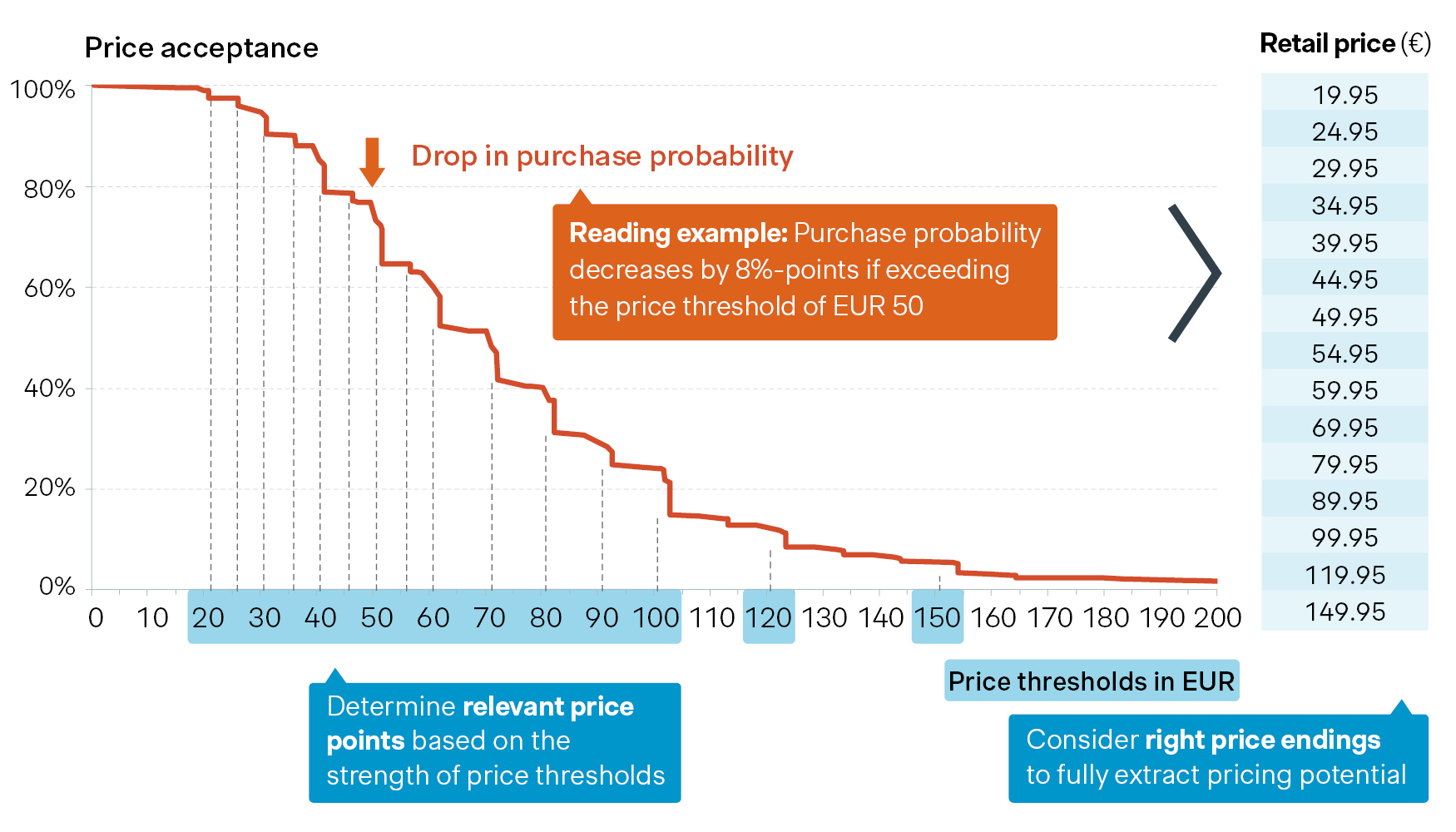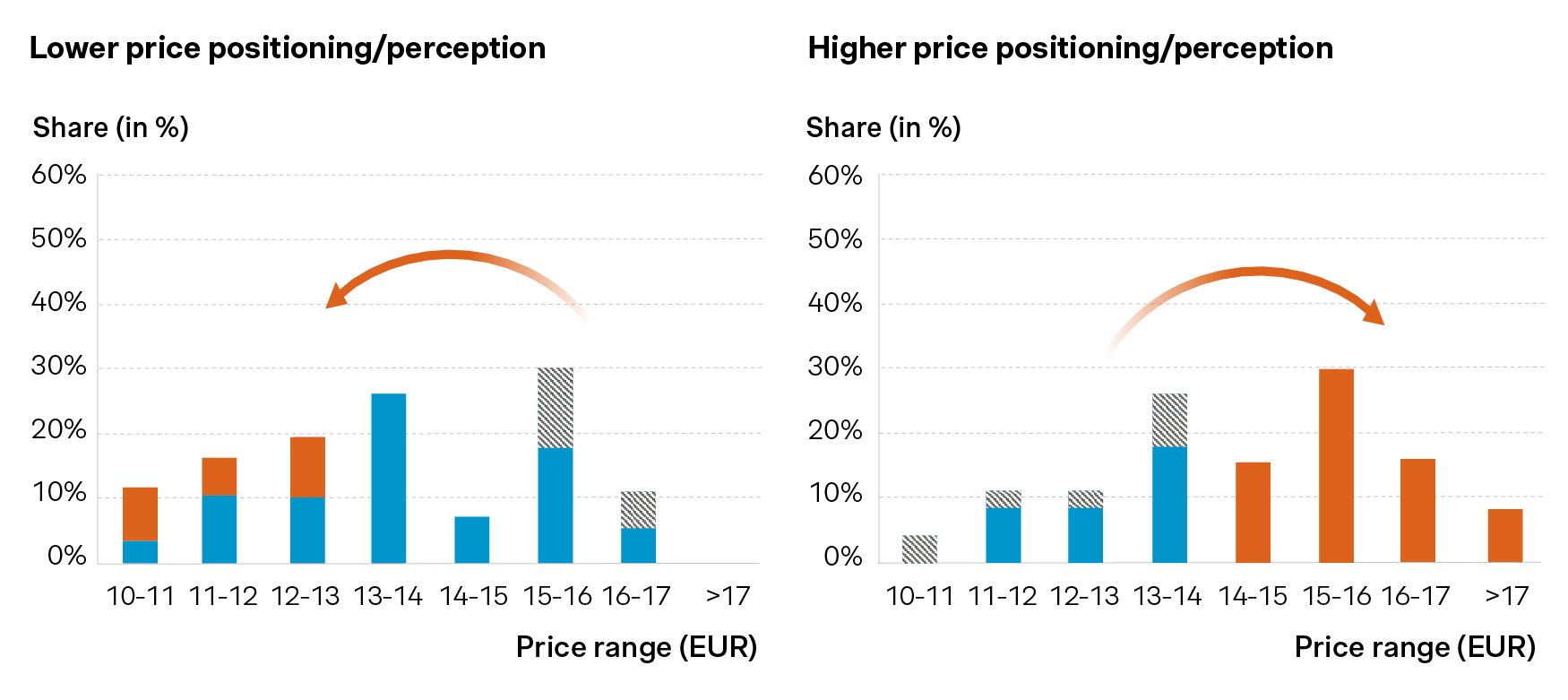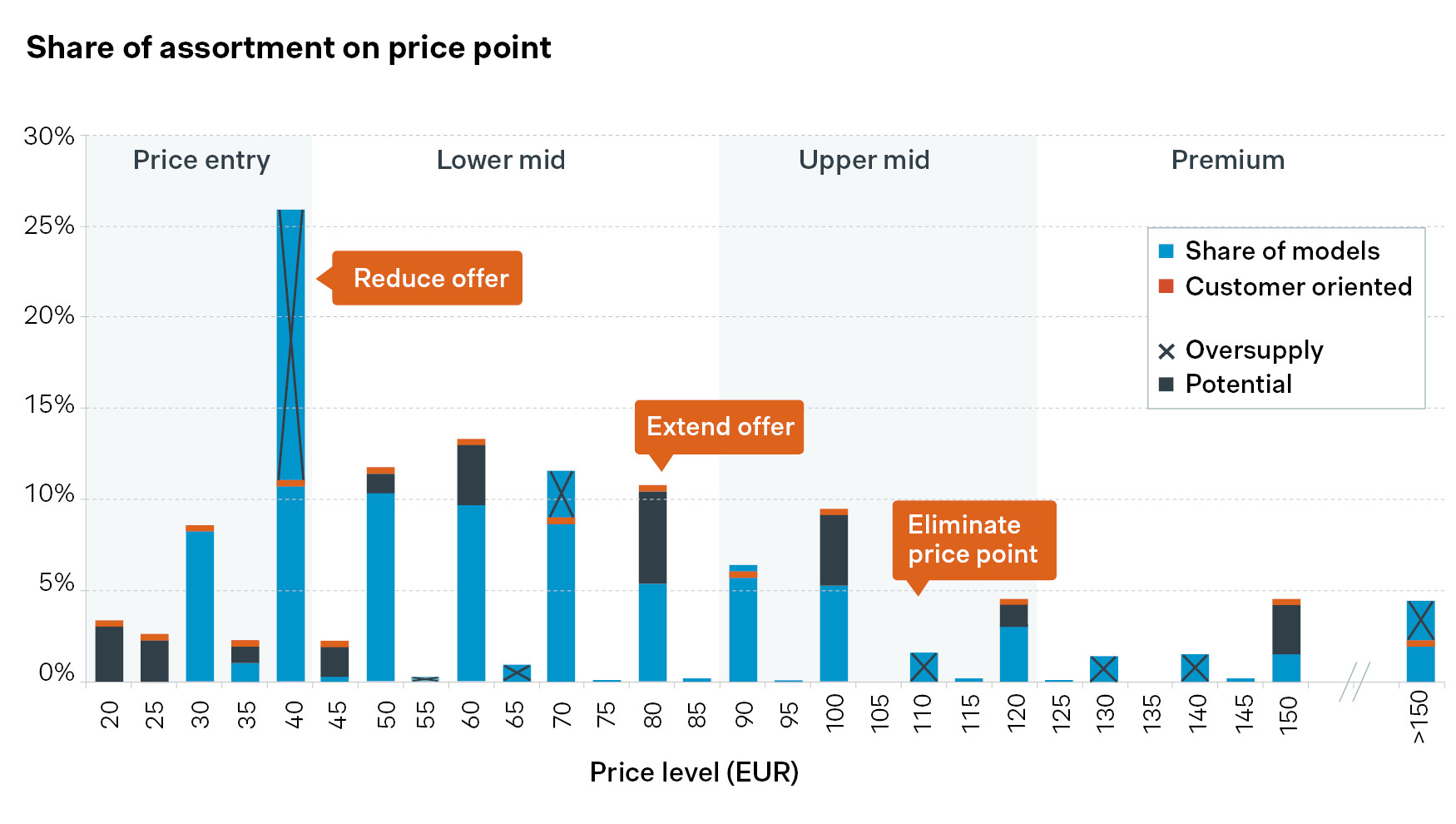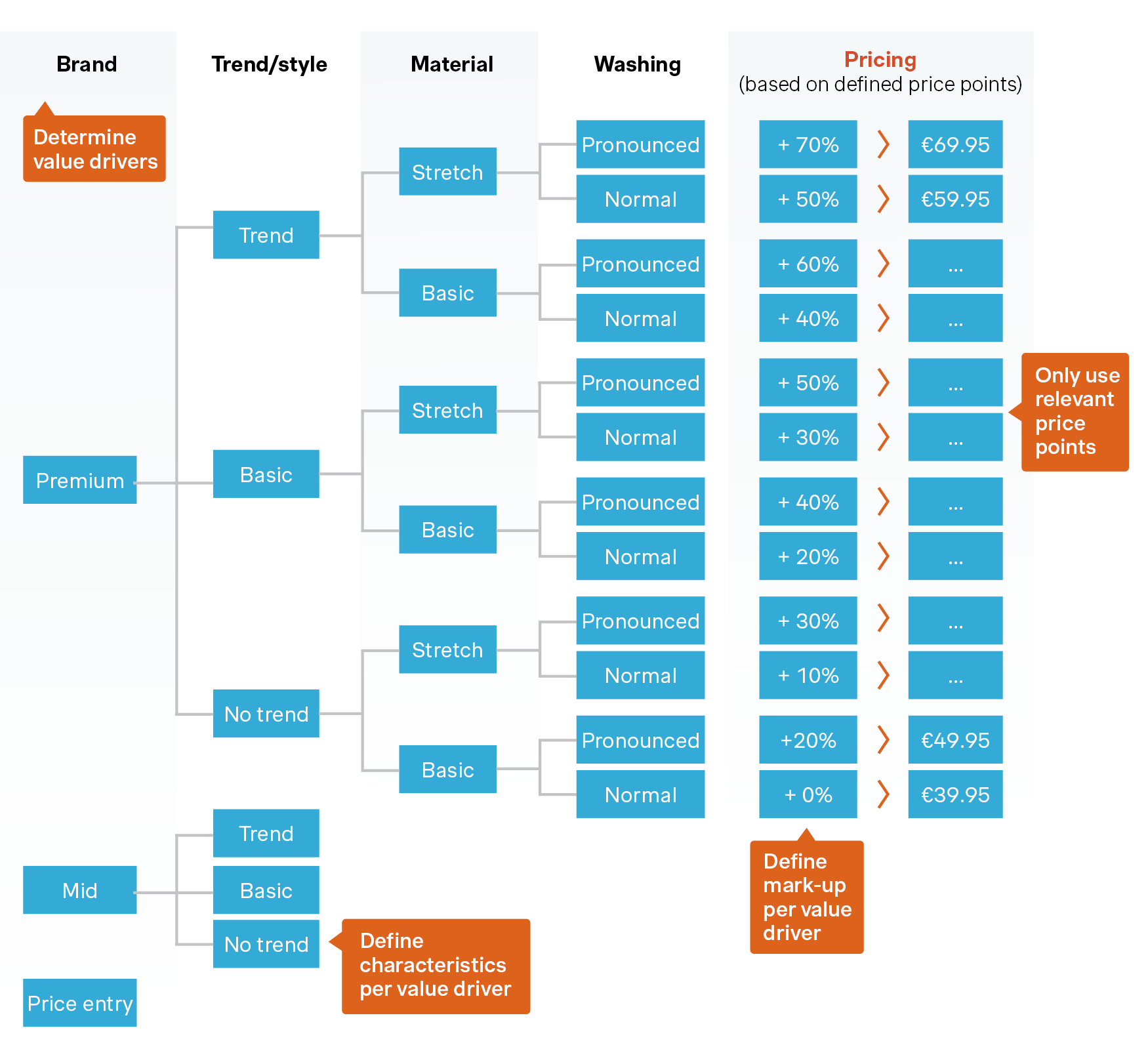Understanding price thresholds
A common misconception about price thresholds is that they are solely used to make products appear cheaper. While this can be an effect, the primary purpose of price thresholds is to align the cost of a product with the value it offers and, crucially, with the customer's willingness to pay for that value. But what exactly are price thresholds?
Price thresholds refer to specific price points at which customers perceive a significant change in value or affordability. These thresholds can vary based on individual preferences, product types, and market conditions. By strategically setting prices around these thresholds, brands can influence customers’ perceptions, drive demand, and ultimately maximize revenue.
Implementing a strategic approach
Brands often manage vast product assortments, sometimes with hundreds or thousands of items. Ensuring that all these products are priced appropriately to maximize customers’ willingness to pay can be challenging without a strategic approach. At Simon-Kucher, our industry experts have developed a three-step approach to optimizing revenue through price thresholds and value drivers:
- Identify relevant price points based on psychological thresholds
- Determine the optimal product assortment for each price point
- Align product values with the established price points.
This three-step strategy has consistently proven effective in maximizing revenue by matching customer willingness to pay with the perceived value of products.
Step 1: Identify relevant price points
Identifying price thresholds for different products involves analyzing the likelihood of purchase at various price points. Price points where there is a significant drop in purchase probability are considered key thresholds. The greater the drop, the stronger the price threshold.

Once these thresholds are identified, determining relevant price points becomes straightforward. To maximize customer willingness to pay, prices should be set just below these thresholds. For example, pricing an item at €19.95 rather than €20.00 effectively maximizes revenue without significantly reducing purchase probability.
Step 2: Determine the optimal product assortment for each price point
After establishing relevant price points, the next step is to determine the optimal number of products to offer at each price point. The distribution of products across price points directly influences the perceived value of a brand or category. A well-structured pricing range helps differentiate price positioning across various markets, channels, or product categories.

For instance, having a higher concentration of products at higher price points can elevate a brand’s perceived value, while a broader distribution at lower price points can suggest affordability. However, many brands distribute their assortments without strategic intent, leading to an oversupply of products at certain price points and missed opportunities in others. One of our clients in the consumer goods industry recently benefited from redistributing their product range to better align with their target positioning, resulting in increased revenue.

Step 3: Align product values with price points
Once the optimal product distribution is established, the final step is to set recommended retail prices that reflect the perceived value of each product. This requires a deep understanding of the value drivers that affect how customers perceive a product’s worth. Value drivers are features or characteristics that influence how a customer perceives a product’s value and their willingness to pay for it. Integrating these value drivers into a price hierarchy allows for optimal price setting in alignment with the defined price points.

A value-based price hierarchy is a tool that helps set prices from the customer’s perspective by providing an overview of value drivers, relevant features, and appropriate mark-ups for each. When applied correctly, price hierarchies can significantly support strategic pricing activities.
Key psychological pricing takeaways for consumer brands
Setting the right recommended retail prices can be complex, as evidenced by the prevalence of suboptimal pricing strategies in the market. However, by leveraging price thresholds and value drivers, brands can simplify this process. Coupling this with well-structured product ranges and pricing aligned with product value creates a robust strategy for maximizing customer willingness to pay and optimizing revenue.
At Simon-Kucher, we specialize in pricing strategy analytics grounded in behavioral economics principles. We help brands harness the power of psychological pricing to determine optimal pricing for each product. To enhance your pricing model and drive revenue growth, contact our team today.




